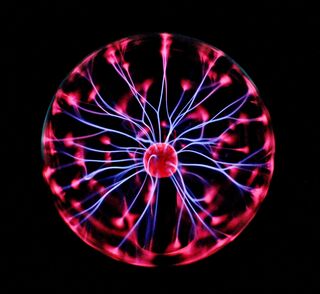Eating Disorders
Nonverbal Mirroring and the Challenge of Eating Disorder Therapy
Mirroring might not enhance social bonds for those with eating disorders.
Posted August 21, 2022 Reviewed by Gary Drevitch
Key points
- Nonverbal mirroring is a therapeutic technique that can enhance the client-counselor relationship.
- New research, however, suggests that nonverbal mirroring could be ineffective in eating disorders treatment.
- People with eating disorders often struggle with social intimacy, possibly due to oxytocin dysregulation.

In counseling, the client-counselor relationship is very important.1 Being able to establish a safe, comfortable, and harmonious environment during therapeutic communication is a strong predictor of how successful therapy will be.
One factor that has a significant effect on client-counselor interactions is nonverbal behavior.1 Nonverbal behavior includes a person's posture, body movement, or facial expressions.
To ensure good nonverbal communication during therapy, counselors sometimes adopt what's referred to as the "counselor standard posture" (CSP).1 The CSP requires a counselor to consciously maintain a relaxed body posture, a forward-leaning torso, and direct eye contact with the client. While the CSP isn't necessarily natural, some clients report that counselors who use this technique appear more trustworthy and to have more expertise.1
In addition to the CSP, postural mirroring, or mimicry, is another nonverbal counseling technique that therapists can use to enhance therapeutic relationships.1 Postural mirroring requires counselors to mirror a client’s nonverbal behaviors. For example, if a client crosses their legs, a counselor using postural mirroring would do the same. The major benefit of mirroring is its potential to establish empathy between client and counselor.

Why Postural Mirroring Can Enhance Empathy
Research shows that our emotions are influenced by our movements, as well as the movements of people we observe.3 Facial and body cues help us figure out what we should be feeling in certain situations. For example, if we see someone crying, we might also begin to feel upset and start to cry.
To help us recognize and interpret the emotional aspects of behavior, our brains are equipped with special cells called mirror neurons which are activated not only when we perform a behavior, but when we observe others performing that behavior as well.2 Mirror neurons allow us to relate to people and empathize with them.
Consequently, by observing and mimicking a client’s nonverbal behavior, a counselor can enhance their ability to experience what a client is experiencing.
Mirroring goes both ways, though, and also influences a client's impression of the counselor. Therefore, if a relationship is new or if a client is especially anxious, mirroring should be used with caution. In these special circumstances, mirroring could anger or upset the client, creating distrust.
Mirroring and Eating Disorders
Only recently has it been investigated how people with eating disorders (EDs) respond to mirroring. Erwin et al. (2022) are the first to test how mirroring influences social interactions for people recovering from an ED.4
In their study, female adults ages 18-30 recovering from an ED were recruited. At the time of the study, all participants had symptom remission for at least 6 months. To prevent participants from noticing that their behaviors were being mirrored, Erwin et al. (2022) created a coverup story: Participants were told that they were volunteering to help develop new materials for future personality research and that their assignment was to discuss images with another participant. The other participant, however, was actually a confederate trained to subtly mimic behaviors. At the study’s completion, no participants guessed the true nature of the study.4

On the day of the study, each participant was placed with a trained confederate into either a mimicry or a non-mimicry condition.4 In the mimicry condition, the confederate subtly mimicked the participant’s posture, movements, and mannerisms, while in the non-mimicry condition, the confederate kept a neutral position with both feet on the floor and their hands in their lap.
Results revealed that people recovering from an ED rated the mimicking confederate as having a rougher communication style than the non-mimicking confederate.4 This contradicts previous evidence suggesting that mirroring improves conversation flow.1
It was also found that the participants who'd had their EDs the longest disliked the mimicking confederate more than participants with shorter ED illness durations. The opposite effect was found in the non-mimicry condition, in which people with the longest ED history liked the confederates more than participants with a shorter ED history.
These results suggest that mimicry might not be an effective strategy in ED treatment, as it could decrease the likability of the counselor and increase discomfort for clients with EDs.4 More research is needed, though.

Why Mirroring Might Be Ineffective in Eating Disorders Treatment
There are several reasons why mirroring might be ineffective in ED treatment.
The first is that those with an ED are hypervigilant toward people's bodies.5 Consequently, these individuals might be especially sensitive to being mimicked. And, even if they might not consciously recognize that they are being mimicked, they might detect something unnatural about the interaction and, consequently, develop a negative impression of the person mimicking them.
Another possibility is that people recovering from an ED are uncomfortable with the intimacy that mirroring creates. This is because people with EDs have demonstrated difficulties with interpersonal connections.6 Social difficulties with intimacy would explain why those with the longest ED history liked the non-mimicking confederates most.
One emerging explanation for why some people with EDs experience social difficulties is that they have an undiagnosed autism spectrum disorder (ASD).7 People with a cooccurring ASD and an ED report that their interpersonal difficulties prevent them from socializing, especially in contexts with food.13 Consequently, these individuals don't develop the skills required to feel comfortable with social intimacy.
On the neurological level, dysregulation in oxytocin functioning has demonstrated involvement in several disorders, including EDs and ASDs.8 Oxytocin is a chemical that regulates social and emotional experiences. Anything from our social memories, how we experience social stress, our ability to create social bonds, empathy, interpersonal trust, and how well we interpret and recognize emotions are influenced by oxytocin.9 In addition to social bonding, oxytocin is also involved in regulating eating behavior and gastrointestinal functioning, making it an important chemical in ED research.
We’re only just beginning to understand the complexities of oxytocin dysregulation in people with EDs.8 Some evidence suggests that genetic variations in oxytocin proteins contribute to certain ED symptoms in anorexia and bulimia.10 These genetic predispositions could help explain why people with EDs often struggle with social interactions.

Conclusions
Erwin et al.'s (2022) findings highlight the importance of neuroscience in a therapeutic setting. However, more research is needed to understand the neurological underpinnings of why people with EDs might not respond well to mirroring.
There is currently no research looking at mirror neurons in EDs. However, those with ASDs have demonstrated dysfunction in mirror neurons.11; 12 Given the possible relationship between ASDs and EDs, future research should explore whether mirror neuron dysregulation also contributes to social difficulties in EDs. These findings could help improve client-counselor relationships in ED treatment.
References
1) Sharpley, C., Halat, J., Rabinowicz, T., Weiland, B., & Stafford, J. (2010). Standard posture, postural mirroring, and client-perceived rapport. Counseling Psychology Quarterly, 14, 267-280.
2) Kilner, J., & Lemon, R. (2013). What we know currently about mirror neurons. Current Biology, 23, R1057-R1062.
3) Shafir, T. (2016). Using movement to regulate emotion: Neurophysiological findings and their application in psychotherapy. Frontiers in Psychology. https://doi.org/10.3389/fpsyg.2016.01451.
4) Erwin, S., Liu, P., Datta, N., Nicholas, J., Rivera-Cancel, A., Leary, M.,...& Zucker, N. (2022). Experiences of mimicry in eating disorders. Journal of Eating Disorders, 10.
5) Jiang, M., & Vartanian, L. (2018). A review of existing measures of attentional biases in body image and eating disorders research. Australian Journal of Psychology, 70, 3-17.
6) Kerr-Gaffney, J., Harrison, A., & Tchanturia, K. (2018). Social anxiety in the eating disorders: A systematic review and meta-analysis. Psychological Medicine, 48, 2477-2491.
7) Mandy, W., & Tchanturia, K. (2015). Do women with eating disorders who have social and flexibility difficulties really have autism? A case series. Molecular Austism, 6. https://doi.org/10.1186/2040-2392-6-6.
8) Romano, A., Tempesta, B., Di Bonaventura, M., & Gaetani, S. (2016). From autism to eating disorders and more: The role of oxytocin in neuropsychiatric disorders. Frontiers in Neuroscience. https://doi.org/10.3389/fnins.2015.00497
9) Giel, K., Zipfel, S., & Hallschmid, M. (2018). Oxytocin and eating disorders: A narrative review on emerging findings and perspectives. Current Neuropharmacology, 16, 1111-1121.
10) Acevedo, S., Valencia, C., Lutter, M., & McAdams, C.J. (2015). Severity of eating disorder symptoms related to oxytocin receptor polymorphisms in anorexia nervosa. Psychiatry Research, 228, 641-648.
11) Dapretto, M. (2006). Understanding emotions in others: Mirror neuron dysfunction in children with autism spectrum disorders. Nature Neuroscience, 9, 28-30.
12) Oberman, L.M., Hubbard, E.M., McCleery, J.P., Altschuler, E.L., Ramachandran, V.S., & Pineda, J.A. (2005). EEG evidence for mirror neuron dysfunction in autism spectrum disorders. Cognitive Brain Research, 24, 190-198.
13) Brede, J., Babb, C., Jones, C., Elliot, M., Zanker, C., Tchanturia, K.,...& Mandy, W. (2020). For me, the anorexia is just a symptom, and the cause is the autism: Investigating restrictive eating disorders in autistic women. Journal of Autism and Developmental Disorders, 50, 4280-4296.




